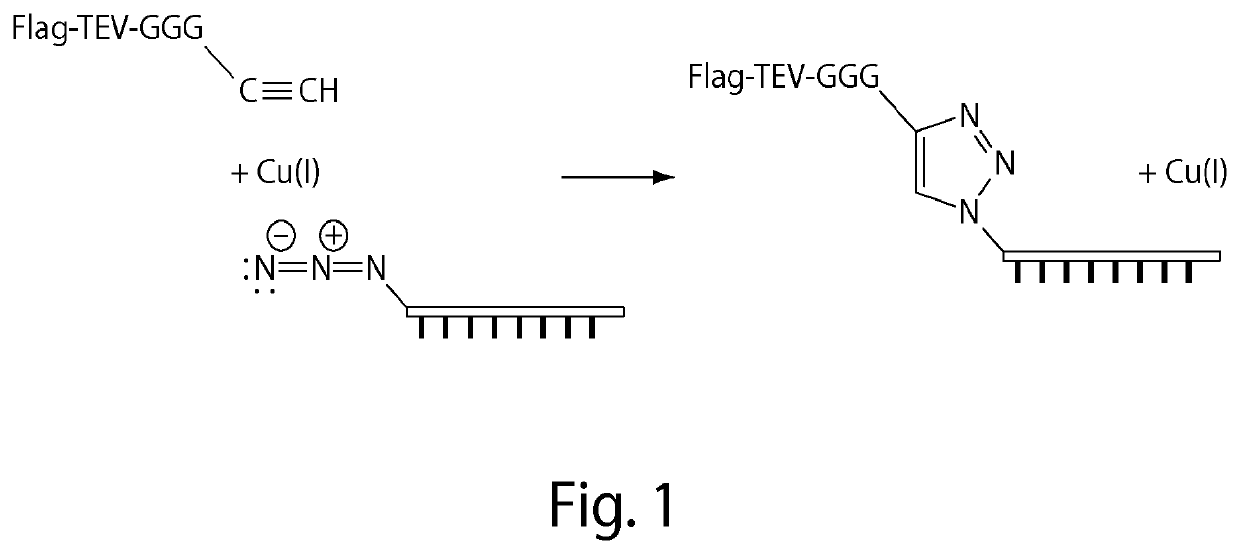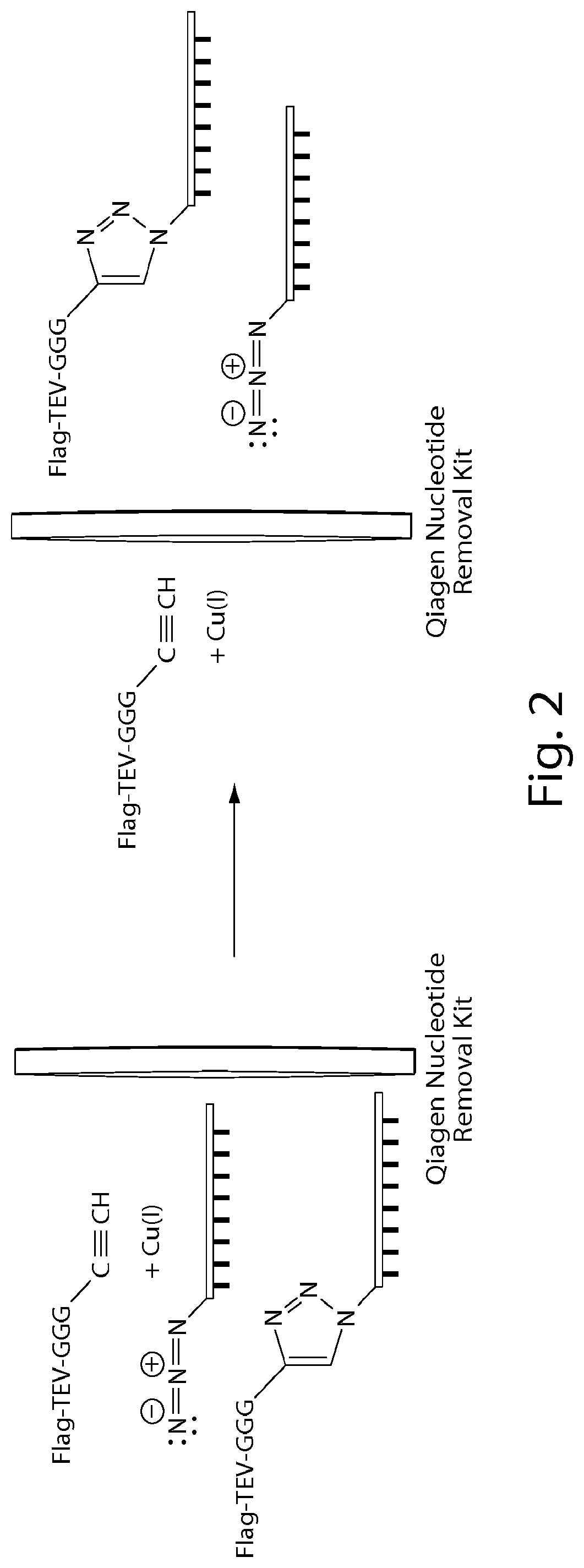Compositions and methods relating to nucleic acid-protein complexes
a technology of nucleic acid and complex, applied in the direction of peptides, enzymology, enzymology, etc., can solve the problems of chemistries failing, unable to use techniques, and all three problems at on
- Summary
- Abstract
- Description
- Claims
- Application Information
AI Technical Summary
Benefits of technology
Problems solved by technology
Method used
Image
Examples
examples
Methods
[0114]Four protocols are presented describing:
[0115]2.1) the formation of a DNA-oligonucleotide bearing a sortase-compatible GGG-peptide,
[0116]2.2) the sortase-catalyzed coupling of a protein to the DNA-peptide chimera, and
[0117]2.3 / 2.4) the integration of DNA-protein hybrids into self-assembling nanostructures for thermostable / non-thermostable proteins.
[0118]The oligonucleotides functionalized for these experiments were both 60 base pairs (bp) oligonucleotides referred to as “oligo 1” and “oligo 2”. Oligo 1 was synthesized with a 3′-azide and oligo 2 was synthesized with a 5′-azide, and both were commercially available from IDT, a custom oligonucleotide manufacturer. The peptide used in these experiments has the sequence of (amino to carboxy or N to C) Flag-TEV-GGG-Pra (i.e., DYKDDDDK-ENLYFQ-GGG-Pra), where “Pra” is the unnatural amino acid propargylglycine (SEQ ID NO: 12). Such synthetic peptides may be ordered from commercial sources such as NeoBioLab. The Pra residue prov...
PUM
| Property | Measurement | Unit |
|---|---|---|
| end-to-end length | aaaaa | aaaaa |
| end-to-end length | aaaaa | aaaaa |
| length scale | aaaaa | aaaaa |
Abstract
Description
Claims
Application Information
 Login to View More
Login to View More - R&D
- Intellectual Property
- Life Sciences
- Materials
- Tech Scout
- Unparalleled Data Quality
- Higher Quality Content
- 60% Fewer Hallucinations
Browse by: Latest US Patents, China's latest patents, Technical Efficacy Thesaurus, Application Domain, Technology Topic, Popular Technical Reports.
© 2025 PatSnap. All rights reserved.Legal|Privacy policy|Modern Slavery Act Transparency Statement|Sitemap|About US| Contact US: help@patsnap.com



